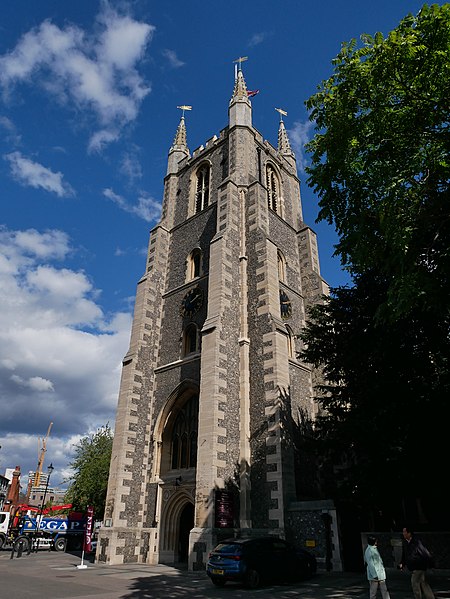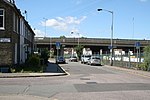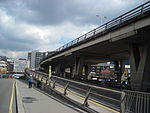Croydon Minster
19th-century Church of England church buildingsAnglican Diocese of SouthwarkAnglo-Catholic church buildings in the London Borough of CroydonBurned buildings and structures in the United KingdomChurch of England church buildings in the London Borough of Croydon ... and 4 more
Churches completed in 1870Grade I listed buildings in the London Borough of CroydonHistory of the London Borough of CroydonRebuilt churches in the United Kingdom

Croydon Minster is the parish and civic church of the London Borough of Croydon. There are currently more than 35 churches in the borough, with Croydon Minster being the most prominent. It is Grade I listed.Six Archbishops of Canterbury are buried in the church: Edmund Grindal (d.1583), John Whitgift (d.1604), Gilbert Sheldon (d.1677), William Wake (d.1737), John Potter (d.1747), and Thomas Herring (d.1757).
Excerpt from the Wikipedia article Croydon Minster (License: CC BY-SA 3.0, Authors, Images).Croydon Minster
Church Street, London Broad Green (London Borough of Croydon)
Geographical coordinates (GPS) Address Website External links Nearby Places Show on map
Geographical coordinates (GPS)
| Latitude | Longitude |
|---|---|
| N 51.3727 ° | E -0.1061 ° |
Address
Croydon Minster (St John The Baptist)
Church Street
CR0 1RF London, Broad Green (London Borough of Croydon)
England, United Kingdom
Open on Google Maps










